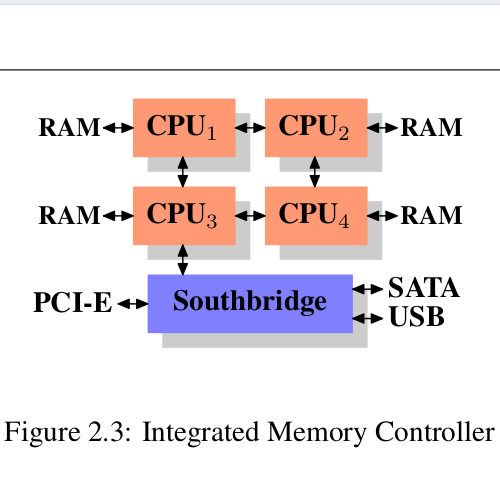Northbridge and Southbrige
Common designs:
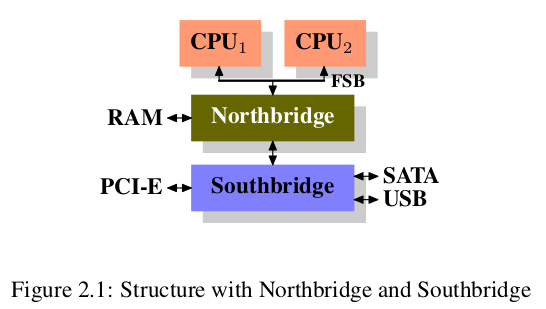
NOTE:
- All data communication from one CPU to anther must travel over the same bus used to communicate with the Northbridge.
- All communication with RAM must pass through the Northbridge.
- The RAM has only a single port.
- Communication between a CPU and a device attached to the Southbridge is routed through the Northbridge.
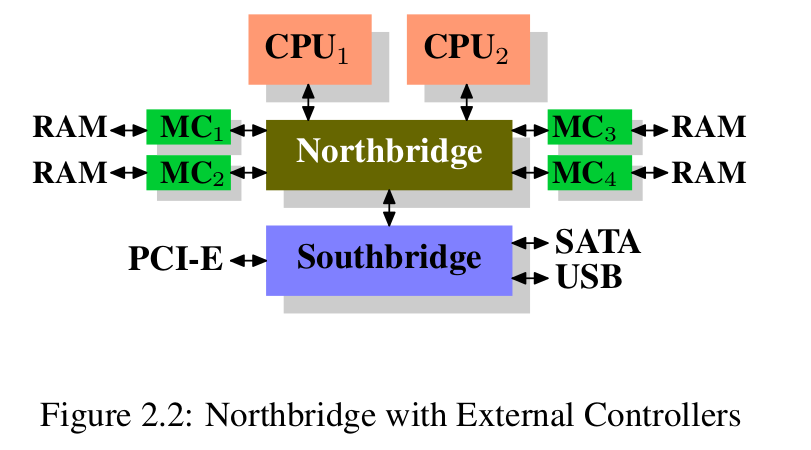
NOTE:
- The advantage of the architecture is that more than one memory bus exists and therefore total available bandwidth increases.
- The limitation of the architecture is the Internal bandwidth of the Northbridge.
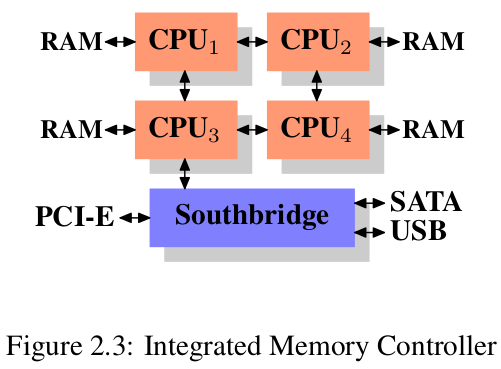
This architecture is made popular by SMP systmes. Now, It’s same as Intel QuickPath Interconnect.
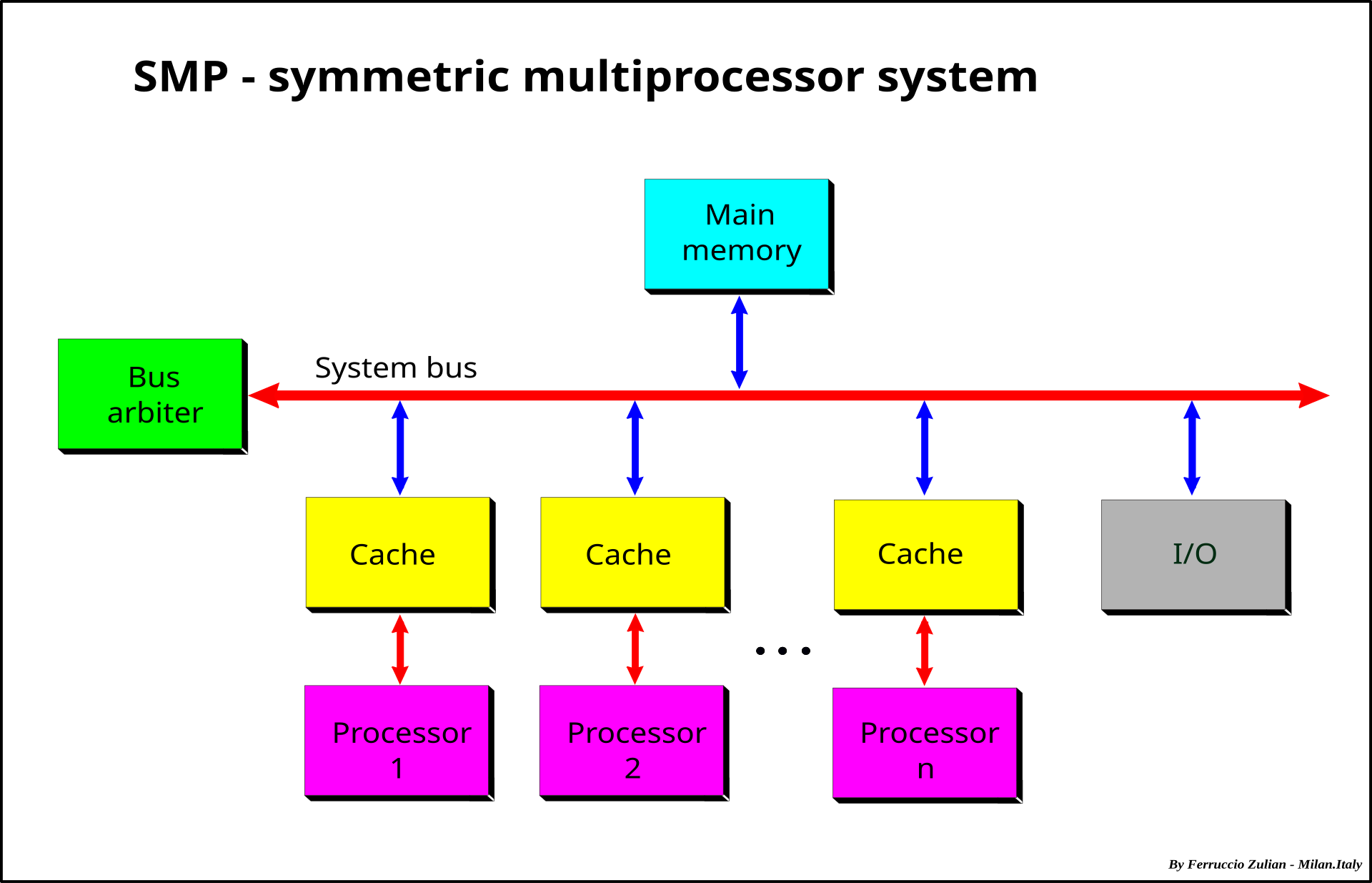
Disadvantage:
- The machine still has to make all the memory of the system accessible to all processors, the memory is not uniform anymore (hence the name NUMA – Non-Uniform Memory Architecture – for such an architecture).
- Local memory (memory attached to a processor) can be accessed with the usual speed.
- CPUs are organized into nodes; within a node the time to access the memory might be uniform or have only small NUMA factors. The connection between nodes can be very expensive, though, and the NUMA factor can be quite high.
Bottlenecks
First:
In the earliest days of the PC, all communication with devices on either bridge had to pass through the CPU, negatively impacting overall system performance.
DMA allows devices,with the help of the Northbridge, to store and receive data in RAM directly witshout the intervention of the CPU.
While this greatly reduces the workload on the CPU,it also creates contention for the bandwidth of the Northbridge as DMA requests compete with RAM access from the CPUs.
Second:
As RAM has a more complex structure, the bus from RMA to the North Bridge will also become more complex.
